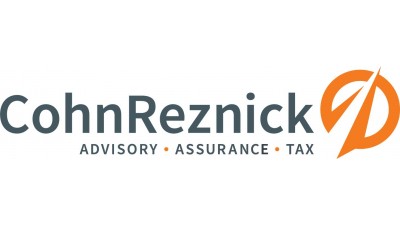2017's Top 3 Emerging Trends In Private Equity
While there are concerns there could be a global scarcity of investment opportunities, particularly as retail struggles, other sectors of CRE are strong. Office, multifamily and industrial are enjoying solid property fundamentals, stabilized interest rates, lower corporate taxes, massive deregulation, the expansion of new sectors and the anticipation of significant infrastructure development.
The following are three key private equity trends emerging in 2017.
1. More revenue growth in tech than non-tech

Software and management platform technology account for 80% of tech deals. Real estate companies have to take tech advancements, security and investor data seriously. Basic IT support strategies, cloud computing, mobility and even 3D printing and advanced analytics are part of raising revenue and streamlining internal operations. Online portals are increasingly becoming integral to maintaining ongoing communication with tenants and investors, as well as keeping up with compliance standards.
Many real estate companies are still facing integration issues, taking on a new property portfolio with legacy systems still in place. At a fundamental level, general partners are still adapting to new technology. Smaller companies with legacy systems often cannot afford expensive new software, and must typically leverage outsourced operations or attempt to solve problems in-house for many administrative functions. Larger companies are becoming much more technically proficient.
Much of the lingering pushback to technological change may be attributed to the cognitive dissonance between real estate as an industry of real world, physical space, and adapting the abstract nature of technology to it. The most successful CRE-oriented technological advances have been those catering to the human needs of a building’s occupants, including health and wellness and mobility — particularly in the office and multifamily markets.
“With changing and actual office space shrinking as more and more people begin working from home, workflow analytics need to be addressed with regard to how we build and allocate space,” CohnReznick Director of Commercial Real Estate David Kessler said. “That shift still presents enormous challenges. Real estate tech is finally catching up to and addressing the realities of these needs.”
2. Commercial interest rates remain steady
While pension fund allocations are rising, interest rates — despite significant increases this year — remain stabilized below pre-recession levels. For institutional investors, opportunities abound in domestic and foreign pension funds, endowments and insurance companies. Returns have stayed steady in the range of 12% to 14%. CRE is a specified, well-defined asset class, and has become stable and robust since the recession. Healthy real estate equates to plenty of available dry powder for investors — as of the first quarter of 2017, $147B in dry powder stands ready to be deployed.
Raising capital remains a challenge. Investors have yield requirements and expectations that have to be met, and as construction costs surge and urban land escalates in value, those demands are not easy to fulfill. Higher numbers of investors are bypassing managers for direct investments, largely due to online investor portals that allow for direct capital engagement.
Capital superabundance and a record dearth of exits at the end of 2016 mean that shadow capital through co-sponsorship and co-investment could account for as much as 15% to 20% of investments.
3. Retail is sinking, but other commercial sectors are growing
Retail is projected to remain standing on shaky feet as e-commerce booms and major department chains shutter hundreds of stores across the country, but the industrial, office and residential sectors are as robust as they have been in the decade since the recession. Consisting of 58% of all offshore capital raised, foreign investment is healthy, with over $107B worth of American properties targeted. National unemployment has fallen to 4.3%, spurring an increase in urban multifamily development and rapid absorption. Commercial property values are projected to increase 7.6% annually through 2017, up from an average of 3.5%. Rent increases are going up each year, with stabilized vacancies and steady interest rates. Stable property fundamentals equate to billions in dry powder for further investment.
The biggest driver of all this is demographics.
“As long as you’ve got boomers and millennials that want to be in urban areas with good public transit, you’ve got business,” Kessler said. “Even large suburban shopping centers are catering to that purpose outside mega-city centers. They’re building multifamily units right over the ground-floor retail, installing accessible transportation, 24-hour gyms, dog parks, sports bars — the works. And it’s proving to be an effective strategy.”
To learn more about this Bisnow content partner, click here.
This is the second in a 12-part series on the evolution of the thorniest financial and technological challenges in modern commercial real estate.

